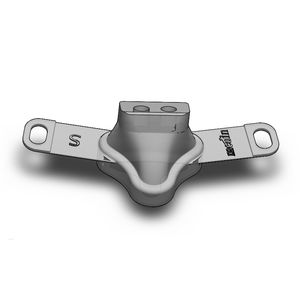
- Medical Technical Facilities
- Intensive care
- Intensive care CPAP machine
- medin Medical Innovations GmbH
- Company
- Products
- Catalogs
- News & Trends
- Exhibitions
Neonatal intensive care CPAP machine infantprematurewith humidifier


Add to favorites
Compare this product
Characteristics
- Applications
- neonatal intensive care
- Patient type
- infant, premature
- Other characteristics
- with humidifier, portable
Description
All the advantages of nCPAP therapy
Economical and universally applicable
Easy to use
In the case of the BubbleCPAP, positive pressure is applied to the airways during inspiration and expiration. Pressure is generated through the expired breathing gas being directed into a water container (bubbler). A dip tube (surge chamber) is on the end of the expiratory ventilation tube. The level of the CPAP pressure depends on how deep the end of the cylinder is immersed into the sterile water.
This simple CPAP system was used for the first time in the early 1970s (Gregory 1971) and it has been used worldwide since then. In 1987, it was demonstrated (Avery 1987) that the incidence of BPD (bronchopulmonary dysplasia) can be reduced using BubbleCPAP. As a result, the system presumably became the most frequently used CPAP application by this time at the latest.
It consists only of:
Air/oxygen blender: medinBLENDER
Bubble bottle for CPAP pressures of 0 to 9.5 cm H2O
Breathing circuit: 2-tube system 5801 HAMILTON-H900
Respiratory gas humidifier HAMILTON-H900
nCPAP interface: medin Miniflow® with masks and prongs
The mechanisms of action of the CPAP pressure are:
Holding the airways open through positive pressure
Increasing the FRC (functional residual capacity)
Increasing the respiratory drive through improved oxygenation
Reducing the breathing effort
Catalogs
No catalogs are available for this product.
See all of medin Medical Innovations GmbH‘s catalogsOther medin Medical Innovations GmbH products
Accessories and Consumables
Related Searches
- Artificial ventilation mask
- Silicone medical mask
- Nasal cannula
- Oxygen nasal cannula
- Non-invasive artificial ventilation mask
- CPAP machine
- CPAP artificial ventilation mask
- O2 gas mixer
- CPAP machine with humidifier
- Medical gas mixer
- Nasal artificial ventilation mask
- Air gas mixer
- Silicone artificial ventilation mask
- Compact CPAP machine
- Infant medical mask
- Pediatric nasal cannula
- Tube flow meter gas blender
- Portable CPAP machine
- Infant nasal cannula
- Intensive care CPAP machine
*Prices are pre-tax. They exclude delivery charges and customs duties and do not include additional charges for installation or activation options. Prices are indicative only and may vary by country, with changes to the cost of raw materials and exchange rates.




